There is a lot of talk about Virtual Reality (VR), Augmented Reality (AR) and Mixed Reality (MR) these days. The conversion for AR and MR has been focusing too much on Microsoft Hololens, even though there are several other products and companies out there that are innovation in this space.
I wanted to take some time and highlight a few of the products out there.
In this post, I am going to share my research on Augmented Reality glasses (AR/MR, same thing to me).
If you want my take on AR vs. VR, take a look at a previous article I wrote: Why I like Augmented Reality better than Virtual Reality
Microsoft HoloLens
Availability: Now (as Developer Kit)
Price: $3000
Link: https://www.microsoft.com/microsoft-hololens/en-us

If you have any interest in AR and MR, you have probably heard of and seen videos of Microsoft’s HoloLens. It looks incredible on all videos. I mean, I just want to buy a pair right now (and I probably would, if they were less expensive)! I have tried them quite a bit on conferences and while they are quite awesome - they have some pretty big drawbacks too.
The field of view is one of the biggest complaints right now (after the price, I guess), clocking in at about 30 degrees. That means that any augmented content is going to be in a pretty small “window” in your vision (again, about the same as a 50” window 2.4 meters in front of you). This not ideal, but it’s a start. We need this to get better though!
HoloLens is important to the industry and they are after all very cool. They are important because interesting AR is getting into people’s mind. People get excited. You can’t sell anything without people getting excited! Google Glasses did not do this. Everyone knew that Google Glasses was notification in your peripheral for the price of looking like a complete dork (not counting the actual $$$ price…). You still look like a moron with the HoloLens, but at least it’s something you might really want, even for such an intolerable price. And they are cool because, well, just look at this video:
ODG R7
Availability: Now
Price: $2,750
Link: https://shop.osterhoutgroup.com/products/r-7-glasses-system
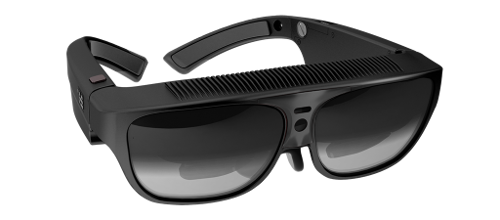
These pretty expensive glasses are not really aimed at the consumer market. They are targeted at the enterprise, which makes sense when you look at the price tag.
The ODG R7 glasses are mostly an Android device that is being projected on a couple of small mirrors in front your eyes. It has some motion sensors, a camera and a few manual controls attached to the glasses as well. If this sounds somewhat simple, it’s because it is. For the most part, it’s just a semi-hands-free version of your Android tablet (I say tablet because of the size of the “screen” in front of your face).
That said, they are still kind of cool. They have the potential to be used for some awesome applications, just because it’s a hands-free tablet. Imagine a service engineer needing to look at a manual while repairing some large piece of equipment. It might be very handy (no pun intended) to not have to reach for your tablet every time you need to reference your documentation. Just say “show me the documentation for part XYZ” and have it pop up in your vision.
The “screen” you see before you is semi-transparent and has a 30-degree field of view, which is about the the same as a 50” TV 2.4 meters in front of you. The field of view to TV screen conversion doesn’t completely translate regarding experience, but it gives you an indication.
I have actually tried ODG R7 myself, so I have some experience with this one. I have to say that it is not a bad pair of glasses, but they are not exactly comfortable to wear. They are a bit heavy and looks kind of dorky, but I can see they being great in certain enterprise work situations. Worst case, they are a useful device for some AR Proof of Concepts.
ODG R8 & R9
Availability: 2017
Price: about $1000 & $1800 respectively
Link: http://osterhoutgroup.com/products-r8 and http://osterhoutgroup.com/products-r9
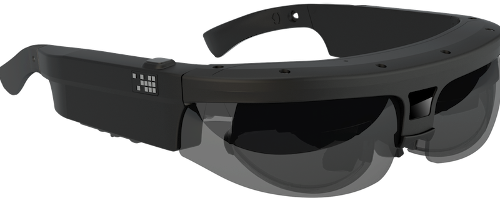
Announced at CES 2017, the ODG R8 and R9 are more aimed at consumers than their previously described R7 model. Like the R7, they are both based on Android and projects an Android “screen” down onto small mirrors aimed at your eyes.
I have tried the ODG R9 (which ships in April 2018) and they are actually very good. They are better than R7 in all ways that matter: they are light, they have bigger FOV and they have world tracking (mapping and depth tracking) which works pretty good.
Both R8 and R9 runs Qualcomm’s new Snapdragon 835, which is said to be perfect for these kinds of devices.
One of the fundamental difference between R7 and R8/R9 is the field of view. R8 has 40 degrees, and R9 has 50 degrees. Both are OK. 50 is starting to be quite good! It’s not perfect yet, but for this, it works. 50-degree field of view would be about the same as 90” monitor 2.4 meters away (so it fills up quite a bit of your view!).
The other difference, which is arguably just as important, is the positional tracking. It’s not 100% clear what we will be able to with it, but it seems to me like this would be used primarily for hand gestures and possibly some interesting 3D objects mapped to real world objects (just like the HoloLens does). We’ll see precisely what they can do!
I didn’t find any cool videos of R8 and R9, but if you are interested, here is an 18-minute long conversion with ODG on a conference: https://www.youtube.com/watch?v=pYPJiQyb_TE
Meta 2 by Meta
Availability: Shipping soon-ish (delayed several times already)
Price: $949 (Developer Kit)
Link: https://www.metavision.com/
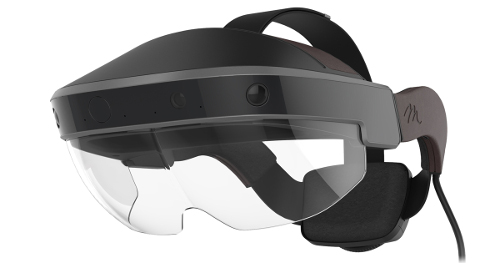
Meta 2 is probably the closest contender to HoloLens right now. They have two big problems that I want to get out of the way immediately:
- They have not even yet shipped their pre-orders
- They are tethered to a computer (which need a powerful GPU)
I hope they start shipping soon because I see a lot of the developers who signed up getting kind of antsy. Meta believes that they should be able to go un-tethered at some point, and since this is a Development Kit, I guess it’s OK (for now!). It’s still not ideal.
Now, over to the good things, because there are quite a few. One of the best things about the Meta 2 is the complete Field of Vision. 90-degrees provides almost full coverage and the potential for total immersion. HoloLens has a much smaller Field of Vision, which means that all augmented content would essentially only be visible through a small “window” right in front of you. Meta 2 has you covered on this. The Meta 2 should be much more immersive, which is essential in my opinion especially when they are all about putting virtual objects into your real world (what people usually describe as Mixed Reality).
Meta 2 has a big focus on natural interactions with no learning curve. This means that objects in your view should behave like you expect them to. In other words, if you reach out and grab something, they should react like you expect them to! If this works, it can be a game changer!
This is a development kit which might not be used for production quite yet, but if they are as good as they say it is, then it should be a good device to create Proof of Concepts on. I pre-ordered myself a pair a while ago, and if they ship within a reasonable time, I won’t cancel it. For now, though, I am waiting in anticipation.
LAFORGE Shima
Availability: Alpha shipping soon-ish, Beta shipping late this year.
Price: $590 (For two pairs: alpha and beta)
Link: https://www.laforgeoptical.com/
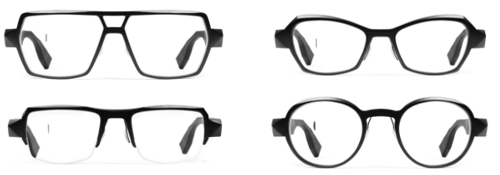
The LAFORGE glasses are Google Glasses done right. Sure, it’s essentially just notifications and not mixed reality “magic,” but they look good, AND they are useful! You could wear these, and nobody would know you were checking your messages (until you start yelling into thin air to reply).
These glasses have focused on something entirely different than all the other ones on this list: appeal for the average person. Google Glass never had this. They had an attraction for the geekiest of us (me included, I must confess). I actually want to wear the LAFORGE glasses in public.
With these, you can control simple widgets for music, texts, exercise, calls, etc. The same things you could probably do with a smart watch, just easier. And more practical. You won’t be able to watch movies on these (they are not going to allow it, for whatever reason), but you would probably reach for your phone far less than today.
They can also be ordered (for no extra charge) with your own personal prescription. That means that if you need glasses today, you can switch them out with a LAFORGE Shime pair.
The LAFORGE Shima glasses are shipping you two glasses if you pre-order now. First an Alpha shipping in Q2 2017, and then Beta Bold (more of a finished product) shipping sometime late 2017.
Vuzix AR3000 & BLADE 3000
Availability:
Price: ~$1000 for BLADE 3000. Not available for AR3000 yet.
Link: https://www.vuzix.com/products/series-3000-smart-glasses and https://www.vuzix.com/Products/Blade-3000-Smart-Glasses
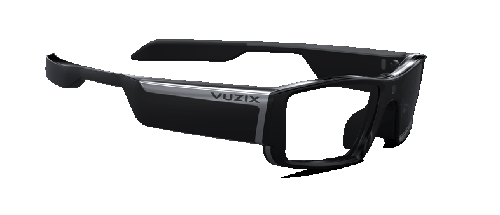
As far as I can see, the biggest difference between AR3000 and BLADE 3000 is that BLADE 3000 are sunglasses. There might be some technical differences that I am not seeing.
These glasses seem to be very much like the LAFORGE glasses. Google Glasses, only not as ugly. I have to say, though, the LAFORGE glasses look a lot better than these.
The difference as far as I can see is that these glasses uses Android, while LAFORGE is some Linux based OS they have created themselves.
Linq by Stereolabs
Availability: Developer Kit in 2017
Price: No information yet
Link: https://www.linqmr.com/
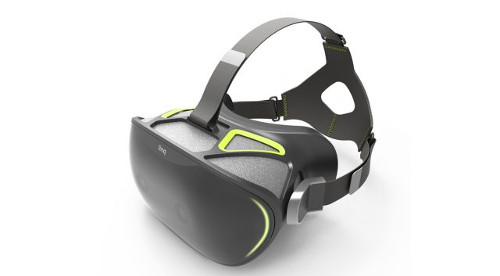
Calling these things glasses might be a slight stretch. They are more like a VR headset that can see the real world. These seem to be mostly targeted at gamers, which I love. Some love for AR gamers is needed!
There is not too much info on these yet, but the videos look very cool.
DAQRI Smart Glasses
Availability: June 2017 (Developer Edition)
Price: $4,995
Link: https://daqri.com/products/smart-glasses/
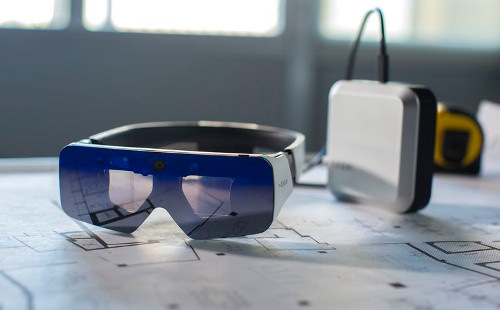
Another pair of enterprise AR glasses. At a whopping FIVE grand, they should be epic. They seem quite a good at first glance, but they are not perfect.
I tried these at AWE 2017, and they where quite OK. But not good enough for me. I would much rather use HoloLens or ODG R9. Especially the world tracking was pretty bad compared to HoloLens (holographs were quire jittery).
And again, another semi-tethered device. I don’t love this. It might be OK for many work scenarios, but I don’t like the idea of work glasses (or any glasses for that matter) having a cable.
Realwear HMT-1
Availability: Now-ish
Price: $1,500 (ish)
Link: https://realwear.com/products/hmt-1/
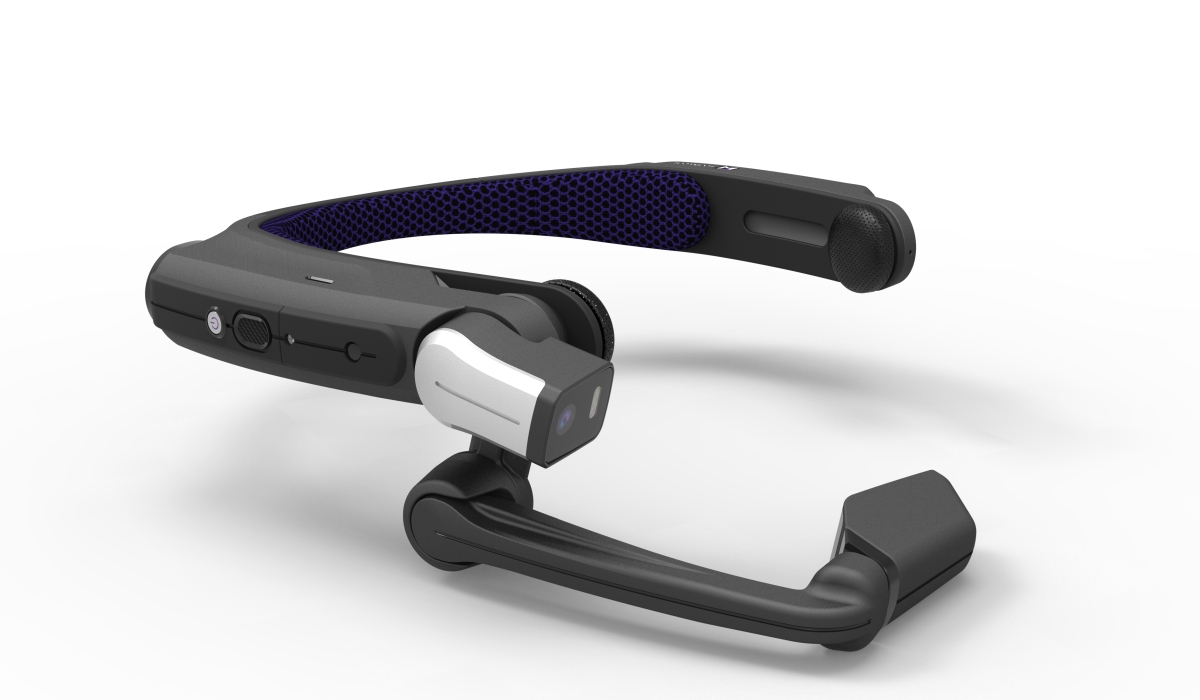
These look dorky as hell, but they are not aimed at the mass market. They are meant for people who get their hands dirty on the job.
They are rugged (I personally saw them thrown AT the floor several times during a presentation) and 100% voice controlled.
I tried this one during AWE 2017 and they are quite comfortable and the voice control works really well. It obviously has no world tracking or 3D to talk about, but it can probably be useful for many use cases!
It also runs Android 6 and it monocular (one monitor) like Google Glass.
More in-depth demo:
Epson BT-300
Availability: Now
Price: £719
Link: https://www.epson.co.uk/products/see-through-mobile-viewer/moverio-bt-300
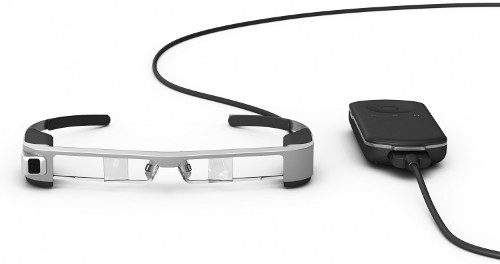
The Epson BT-300 is yet another device that is an Android “screen” in front of your face. Don’t get me wrong; I don’t mind. The Android approach can good!
I tried these at AWE 2017 and I was not really impressed. They look ugly and they were no better than any of the ODG glasses. I just don’t see any good reasons to be using these.
Epson seems to focus this product a lot on drone piloting. I haven’t seen that particular emphasis on any of the other devices, so that makes this one bit interesting.
The Epson BT-300 are unfortunately semi-tethered too. At least there is some cable running out of the glasses. Bummer!
The screen is extra bright, making it more fit for outdoor use (which makes sense if you are targeting drone pilots). However, the field of view is only 23-degrees, which is a bit small for my taste. It might be OK, for drone piloting, though - I have never tried it.
Magic Leap
Availability: Who knows! Probably a year or two away still.
Price: Nobody knows!
Link: https://www.magicleap.com/#/home
Magic Leap is the mysterious AR technology that tech giants like Google keep throwing money at. The few demos out there are plagued by controversy due to some of them might be computer generated. Some people seem to believe they will never be able to deliver on their promise. We will see.
Their promise though is not a small thing. Small glasses with incredibly immersive AR is no small feat. At least not to the point that is shown in their videos. I won’t talk too much about Magic Leap because I don’t really know much (I mean, nobody does). Just watch the videos and be excited by the possibility that this might come true:
More Glasses
There are many glasses out there, both in development and that you can purchase right now. A lot of them are not really interesting to me, and have therefore been left out of this post.
However, if you like to see more alternatives, or view more data on the ones mentioned here, take a look at “The Definitive Guide to Augmented Reality Smart Glasses”. This site has a lot of different options and a lot of data you can look at.
Follow me on Twitter: @gjermundbjaanes